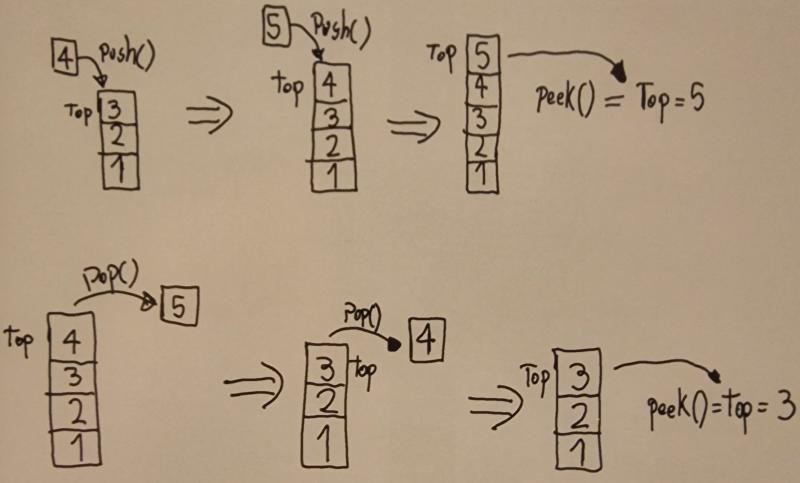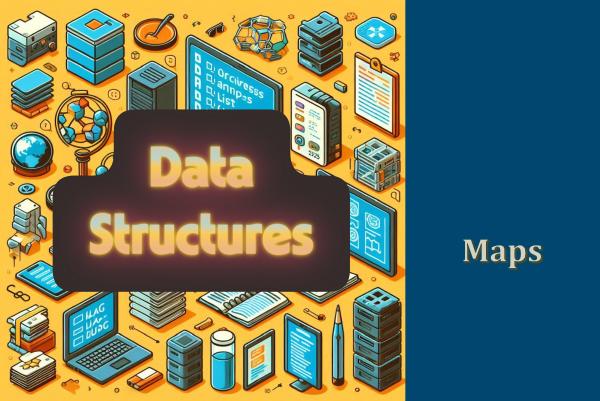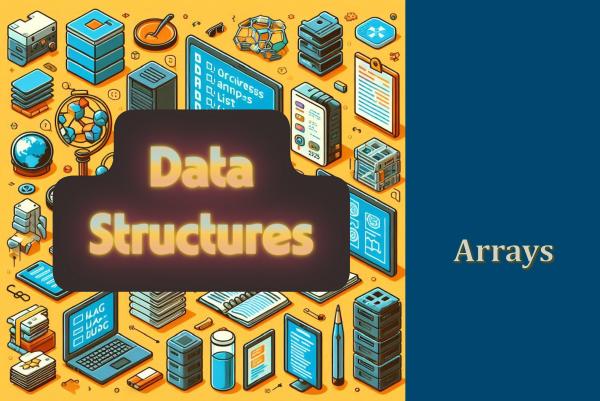The LIFO nature of stacks is due to the fact that only the top element can be accessed and manipulated. The operation of placing an element on the stack is known as “push”, while removing an element from the stack is a “pop”. The LIFO operation causes the last element placed in a stack to be the first to be removed.

Main operations#
The primary operations supported by a stack structure are:
- Push: adds an element to the top of the stack.
- Pop: removes the element at the top of the stack.
- Peek: allows accessing the top element without removing it from the stack.
- isEmpty: checks if the stack is empty.
Most languages like Python and Java provide stack implementations in their standard libraries.
Implementation#
A stack can be implemented using a linked list so that each node points to the previous node.
class Node:
def __init__(self, value):
self.value = value
self.previous = None
class Stack:
def __init__(self):
self.top = None
self.size = 0
def push(self, value):
new_node = Node(value)
if self.top is None:
self.top = new_node
else:
new_node.previous = self.top
self.top = new_node
self.size += 1
def pop(self):
if self.top is None:
return None
top_node = self.top
self.top = self.top.previous
self.size -= 1
return top_node.value
def peek(self):
if self.top is None:
return None
return self.top.value
def is_empty(self):
return self.top is None # Returns true if top is None
def __len__(self):
return self.size
def __str__(self):
values = []
current = self.top
while current:
values.append(str(current.value))
current = current.previous
return "\n".join(values)
print("Creating a new stack")
stack = Stack()
print("==========")
print("Check if stack is empty")
print(f"Is stack empty? {stack.is_empty()}")
print("==========")
print("Push first element")
print(" stack.push(\"First\")")
stack.push("First")
print("==========")
print("Print stack:")
print(stack)
print("==========")
print("Print top element using peek")
print(f"stack.peek() => {stack.peek()}")
print("Add two more elements: stack.push(\"\"):")
print(" stack.push(\"Second\")")
print(" stack.push(\"Third\")")
stack.push("Second")
stack.push("Third")
print("==========")
print("Print stack:")
print(stack)
print("==========")
print("Print top element using peek")
print(f"stack.peek() => {stack.peek()}")
print("==========")
print("Check if stack is empty")
print(f"Is stack empty? {stack.is_empty()}")
print("==========")
print("Get top element using pop")
print(f"stack.pop() => {stack.pop()}")
print("==========")
print("Print top element using peek")
print(f"stack.peek() => {stack.peek()}")
print("==========")
print("Get top element using pop")
print(f"stack.pop() => {stack.pop()}")
print("==========")
print("Get top element using pop")
print(f"stack.pop() => {stack.pop()}")
print("==========")
print("Check if stack is empty")
print(f"Is stack empty? {stack.is_empty()}")
Usage examples#
Stacks have many uses in programming:
Execution stack (call stack): records pending function calls to resolve. Implements expected LIFO behaviour.
Browser stack: allows going back (undo) in the browser history similarly to a LIFO stack.
Math expression execution: stacks can verify parentheses, brackets, braces, etc.
Algorithms and data structures: like in the quicksort algorithm and in data path implementations.
Conclusion#
Stacks are versatile data structures thanks to their LIFO operation principle. Having a good command of stacks, their uses and applications is essential in computer science.
Cheers for making it this far! I hope this journey through the programming universe has been as fascinating for you as it was for me to write down.
We’re keen to hear your thoughts, so don’t be shy – drop your comments, suggestions, and those bright ideas you’re bound to have.
Also, to delve deeper than these lines, take a stroll through the practical examples we’ve cooked up for you. You’ll find all the code and projects in our GitHub repository learn-software-engineering/examples.
Thanks for being part of this learning community. Keep coding and exploring new territories in this captivating world of software!








